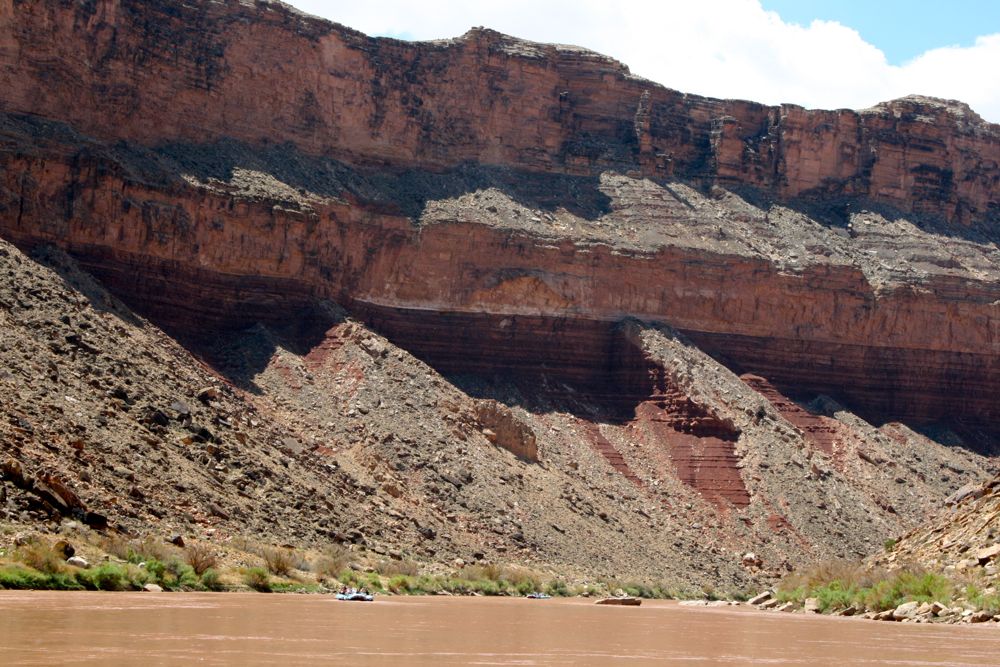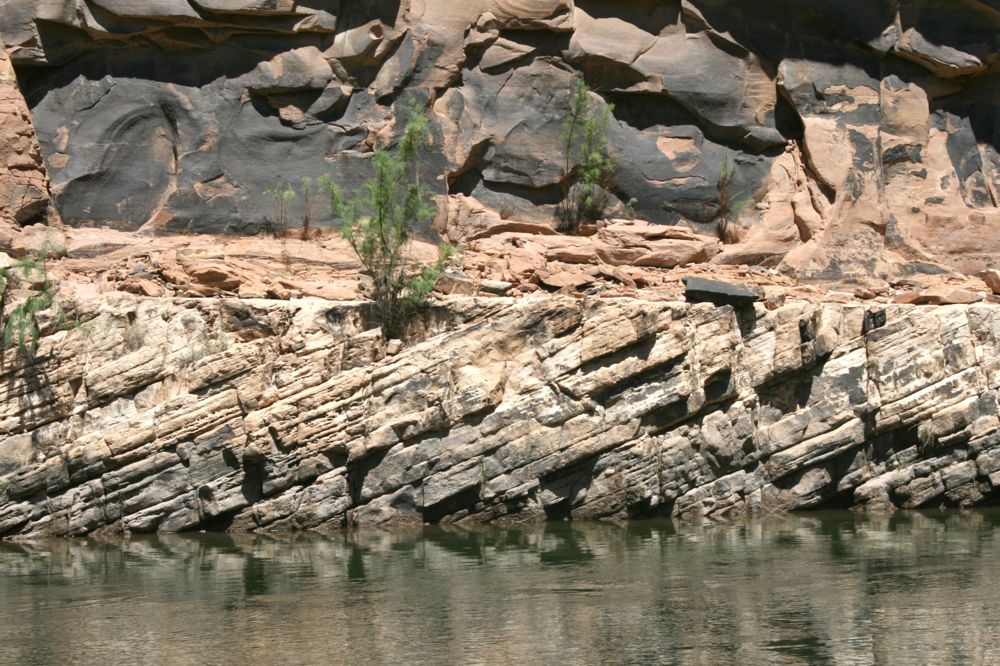"I don't like sand. It's coarse and rough and irritating and it gets everywhere."
—Anakin Skywalker, Star Wars II: Attack of the
ClownsClones
There’s a big, sandy problem with Noah’s Flood.

Some people say the world was once submerged in a universal deluge. This catastrophe drowned everyone who didn’t have a ticket for the Ark, a boat with dimensions measured in cubits and sealed with pitch. The story is that for a while the Ark floated along with the only survivors of this flood. Then the Ark grounded on a mountain, the waters receded, and some doves and ravens were released. Sacrifices were made to honor the event. If this story sounds familiar, that’s probably because that is how it is told in the Epic of Gilgamesh (circa 2500 BCE). Then there’s also that Russell Crowe movie (circa 2014 CE).
Some creationists look at the thick layers of sediments in Grand Canyon and declare that within those precipitous cliffs is conclusive proof that the Flood of Noah was a historical event. They point to the flat-lying strata and declare that here, at last, is physical evidence of vast inundation. And on a very superficial level, these rock layers might seem to give them some comfort; many of the rock layers found in Grand Canyon were indeed deposited in shallow marine waters. But on closer inspection, there’s nothing extraordinary about that because most sedimentary layers form in water. In fact, when rocks are lifted above sea level by plate tectonics, they tend to break down and crumble rather than accumulate.
But of all the persistent problems that plague the creationist model of the Flood, one problem in particular stands out as a fatal flaw for the idea of a universal Flood: the Coconino Sandstone.

The Coconino Sandstone is a buff-colored unit first encountered just a few miles down river from the Lee’s Ferry launching point. The Coconino is known for having striking diagonal features, called cross-beds, which you can see in the picture above. These cross-beds formed, according to standard geologic interpretations, as wind pushed sand up desert dunes, piling the particles higher and higher until an avalanche of warm sand spilled down the steep face. When you think of how the Coconino formed, think of an endless ocean of tan sand, punctuated by migrating dunes. The National Park Service describes it this way:
The Grand Canyon region would have looked much like the Sahara desert in northern Africa does today.
One of the classic signatures of sands in a desert environment is the “frosting” of grains, which happens in eolian (wind-blown) conditions. As wind blows dry sand grains up dunes, the blown grains smash together in uncountable tiny collisions. When viewed with a scanning electron microscope, such grains have pitted surfaces resembling frosted glass. Another feature of a desert environment is the large-scale cross-bedding (see picture above and huge cross-beds in Zion below). A third feature is the fossilized trackways of terrestrial animals.

Does the Coconino have frosted grains? Check. Cross-bed structures? You bet. Fossilized trackways? Yep. Everything seems to fit with the standard eolian interpretation. And here is the crux of the problem for creationists: this evidence means the Coconino formed on dry land in the middle of what should have been the year of the Flood.
How could this layer have formed on land while the whole world was submerged during Noah’s Flood? Creationists recognize the dangerous dilemma posed by the existence of the Coconino. John D. Morris, president of the Institute for Creation Research, notes:
The conventional view is that the Coconino Sandstone represents ancient wind-blown desert sand dunes, which would have been impossible to form during the global Flood.
Creationists Andrew Snelling and Steve Austin described the issue this way:
At first glance this interpretation would appear to be an embarrassment to Bible-believing geologists… Above the Coconino Sandstone is the Toroweap Formation and below is the Hermit Formation, both of which geologists agree are made up of sediments that were either deposited by and/or in water. How could there have been a period of dry desert conditions in the middle of the Flood year when ‘all the high hills under the whole heaven were covered’ (Genesis 7:19) by water?
How indeed. Where did all these frosted grains come from? Could they have moved from another area, when the Flood scooped them up from a pre-Flood desert? Maybe the Flood was not universal? Perhaps the waters withdrew and then surged again, exposing land briefly? These arguments are all special pleading. The most parsimonious explanation is that there was no worldwide Flood. But—color me surprised—that’s not the tack that the creationists take, as I’ll explain in part 2.
